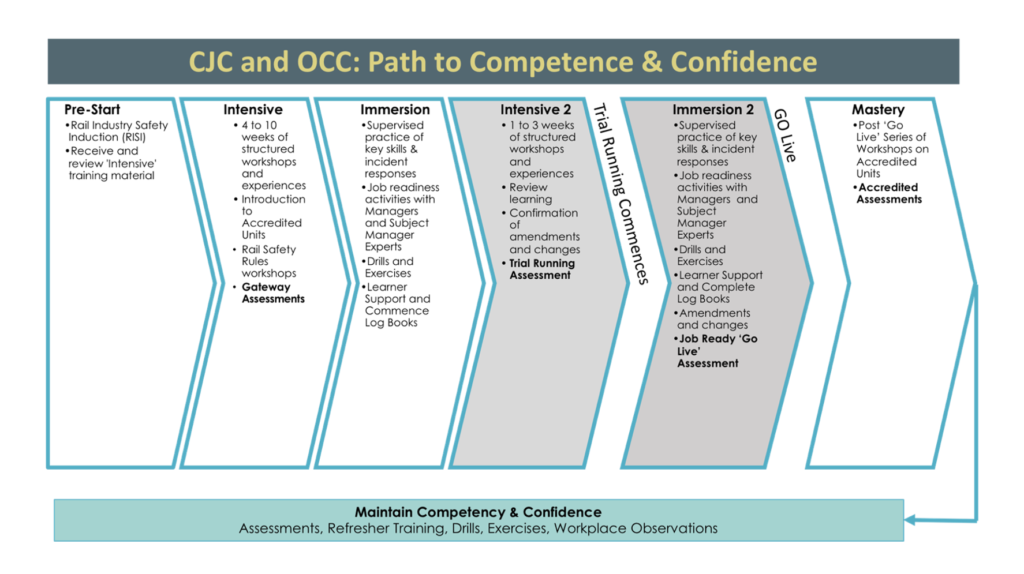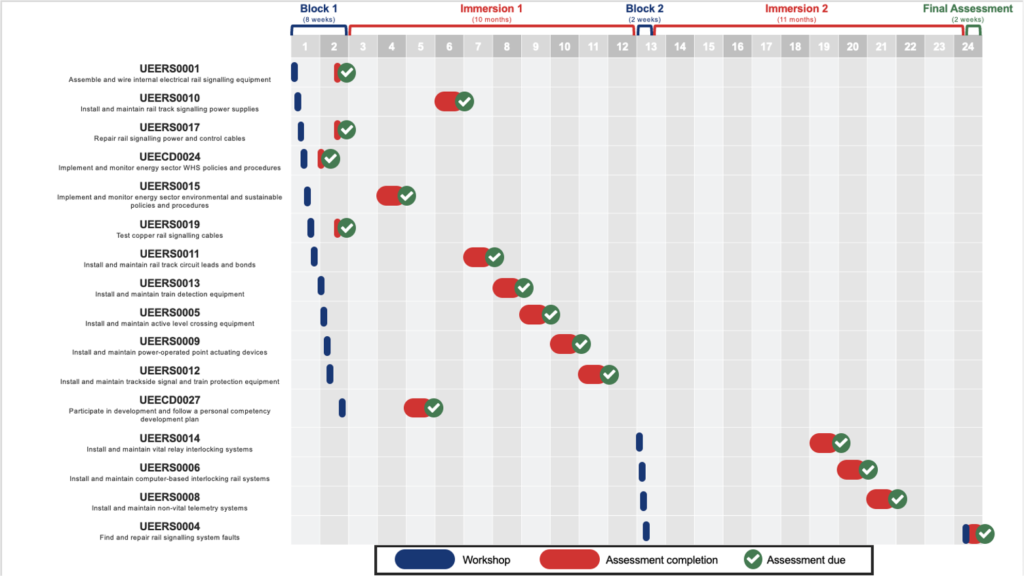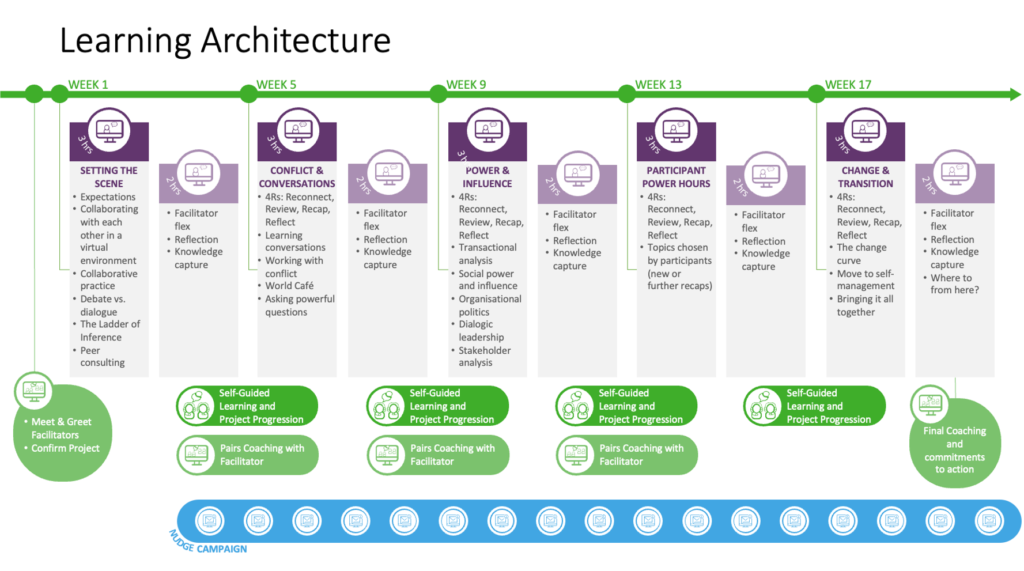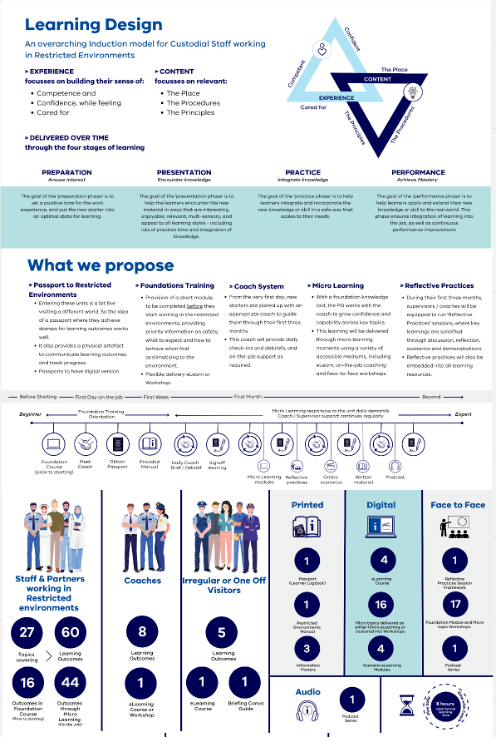Training Architectures
What are training architectures?
Training architectures (also referred to as course architectures, learning architectures and program architectures) provide a snapshot of the overall structure of a course. They outline the duration, units/modules and topics. It illustrates when and how the content will be delivered (e.g. face-to-face, online, on-the-job and/or self-paced delivery) and assessment will occur.
Why are training architectures important?
From a client’s perspective
Training architectures are ideal means to convey the structure of a program to stakeholders. This is particularly useful when presenting a high level design, as it is used to confirm and agree upon a learning solution, and quickly understand the resources that may be required to bring this learning solution to life.
From a learning design perspective
From a design perspective, it is also a way to ensure the flow of the program makes sense, and appropriate (and, preferably, a range of) methods are used to deliver content. It also shows the course duration, which is especially important when designing accredited training which requires nominal hours to be met.
From a learner’s perspective
From a learner’s perspective, a training architecture informs the participant of their overall learning journey. It is a pathway, or a map, that illustrates where they’re going and how they’ll get there. It shows what they will be doing and when, allowing them to prepare for learning and assessments. Learners may also use the training architecture to track their progress as they move through the course.
From a facilitator’s perspective
Facilitators use training architectures to understand the overall program, much like stakeholders and learners. However, to facilitators, it is also a tool to understand the resources required and when, and to make arrangements to ensure the program runs smoothly. Whilst resources should be called out explicitly in the Facilitator Guide, the training architecture helps them to determine, at a high level, what they will need to arrange, such as on-the-job training mentors, site visits, access to facilities, tools and equipment, guest speakers and other resources.
What do training architectures look like?
Below are some examples of training architectures that we have produced for our clients.




If you’re looking for an experienced team of eLearning Developers to create an effective online learning solution, contact us for a free quote.




